Thousands of Buddhist Monks in Asia Learn Transcendental Meditation
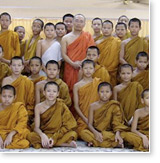 More than 3,000 Buddhist monks in 100 monasteries throughout Southeast Asia have learned the Transcendental Meditation technique. One source of their inspiration to learn is the work of revered Japanese Buddhist monk, Reverend Koji Oshima, a longtime TM practitioner and certified TM teacher. According to Rev. Oshima, the Buddhist monks appreciate the
simplicity, effortlessness, and profound experience of transcendence,
which is gained almost immediately after starting the TM practice. Rev.
Oshima adds that transcendence provides the natural basis for the monk’s
subsequent prayers and practices.
More than 3,000 Buddhist monks in 100 monasteries throughout Southeast Asia have learned the Transcendental Meditation technique. One source of their inspiration to learn is the work of revered Japanese Buddhist monk, Reverend Koji Oshima, a longtime TM practitioner and certified TM teacher. According to Rev. Oshima, the Buddhist monks appreciate the
simplicity, effortlessness, and profound experience of transcendence,
which is gained almost immediately after starting the TM practice. Rev.
Oshima adds that transcendence provides the natural basis for the monk’s
subsequent prayers and practices. 
During Maharishi’s many tours of Asian countries, he often visited monasteries and spoke personally to many Buddhist leaders. One prominent monk in Sri Lanka, who is now the leader, or “Shan Kara,” of one the three streams of Buddhism in Sri Lanka, has been instrumental in encouraging monks throughout the country to take TM instruction from Reverend Oshima.
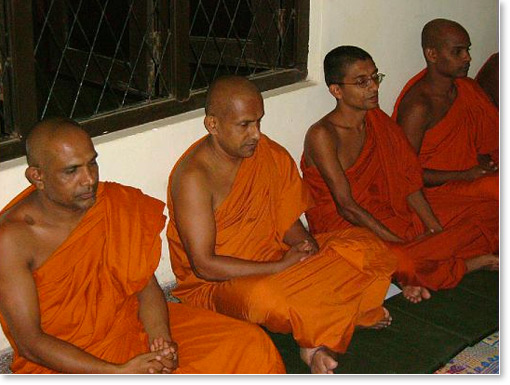 |
| Buddhist monks in Sri Lanka beginning their day with the practice of the TM technique |
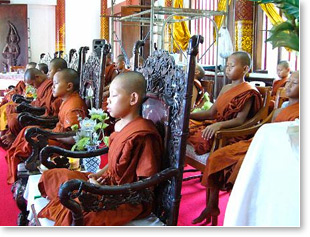 |
| Young students practicing the TM technique as part of their daily routine at a Buddhist monastery in Thailand |
Reverend Oshima has been awarded an honorary doctoral degree by Maharishi University for the significant contributions he has made to society by promoting the experience of Nirvana—the spiritual foundation for the achievement of the goals of Buddhism. Through Reverend Oshima’s travels and teaching of the Transcendental Meditation technique he has helped enliven the knowledge and direct experience of Absolute Being in the lives of thousands of Buddhist monks—an influence that helps heighten the peace, happiness and sustainable progress of these monasteries and the world around them.
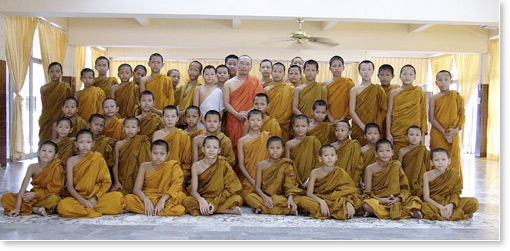 |
| Reverend Koji Oshima (center) with students who have learned the TM technique at a monastery in Thailand |
TM Becomes Integral Part of Buddhist School
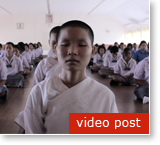 Many
poor families in Thailand are not able to send their daughters to
school. As a result, young girls are too often employed in degrading
occupations putting them at risk of abuse, AIDS, exploitation, and
addiction. One school is growing rapidly because of its ability to help provide
education to this at-risk segment of Thailand’s population.
Many
poor families in Thailand are not able to send their daughters to
school. As a result, young girls are too often employed in degrading
occupations putting them at risk of abuse, AIDS, exploitation, and
addiction. One school is growing rapidly because of its ability to help provide
education to this at-risk segment of Thailand’s population. 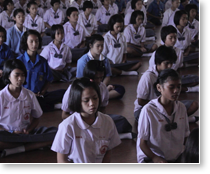 Dhammajarine e Witthaya Free School provides
kindergarten through 12th grade education to more than 400 girls who
otherwise would have no opportunity to go to school.
Dhammajarine e Witthaya Free School provides
kindergarten through 12th grade education to more than 400 girls who
otherwise would have no opportunity to go to school.
Several years ago the Buddhist nuns in charge of the school began integrating the practice of the Transcendental Meditation technique and advanced TM programs into the school’s curriculum.
By providing a rigorous, modern academic curriculum along with Buddhist education, the school helps girls to not only lead a better life, but to become the future leaders of their communities.
EXCERPTS FROM THE VIDEO:
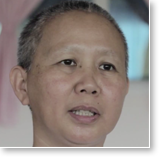 Acharn Yai, Director/Principal of the Dhammajarinee Witthaya School:
Acharn Yai, Director/Principal of the Dhammajarinee Witthaya School: "Dhammajarinee Witthaya School is the first and only Buddhist boarding school in Thailand. We provide education according to the standard curriculum along with this we also provide life-skills training and Dharma studies (Buddhist teachings) up to the highest level to culture their ethics."
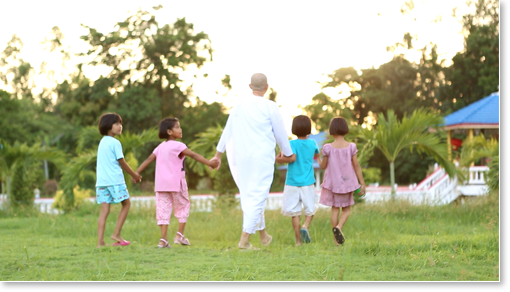
Kru Muay, a teacher:
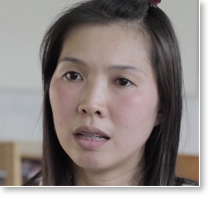 “Our school in the first school in Thailand that
incorporates the TM technique to culture the students’ ethical values.
The students in this school learn TM at the beginning of the semester
when the new students arrive. Coming from different places their
behavior was quite aggressive and they didn’t pay attention to their
studies that much, but after we introduced TM and after they started
practicing, I feel that now some students are more settled and some pay
more attention to their studies.
“Our school in the first school in Thailand that
incorporates the TM technique to culture the students’ ethical values.
The students in this school learn TM at the beginning of the semester
when the new students arrive. Coming from different places their
behavior was quite aggressive and they didn’t pay attention to their
studies that much, but after we introduced TM and after they started
practicing, I feel that now some students are more settled and some pay
more attention to their studies. “Because students have different educational backgrounds we cannot expect them to change overnight. It’s something that needs time, but observing their progress since they have started meditating I can see that they have greatly improved in different ways in their behavior, in their studies and in their relationship with the teachers and their fellow students.”Acharn Yai, Principal:

“(With TM practice) it becomes much easier to deal with them. Their aggressive behavior decreases, their grades go up; they pay more attention to whatever we teach them. When they have inner happiness, they soak up whatever knowledge we give, unlike before.
“Before we introduced TM, we hardly sent students for competitions anywhere because we felt that there were not ready. After TM, wherever we send them they come back with an award. In the national memory competition we’re very proud to say that our student won first place. When the reporter asked about her winning she said that she won because she meditates regularly.”
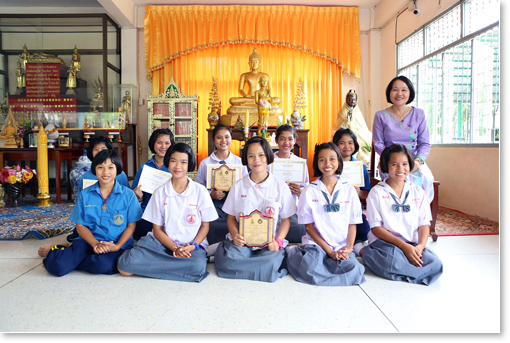
Students’ experiences:
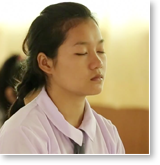
“Before I learned TM I was a good-for-nothing, pretty much! Meditation has broadened my thinking, increased my self-confidence and now I’m more diligent.”
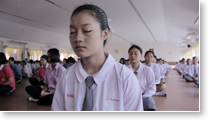 “Before learning to meditate I felt frustrated and didn’t want to do
anything. But when I close my eyes to meditate, my frustration
decreases, my irritation subsides and I feel good. When I study, I can
focus on my studies more.”
“Before learning to meditate I felt frustrated and didn’t want to do
anything. But when I close my eyes to meditate, my frustration
decreases, my irritation subsides and I feel good. When I study, I can
focus on my studies more.”Or to donate contact: ThaiNuns@hotmail.com

• What Kind of Meditation Practice Did The Buddha Teach?






